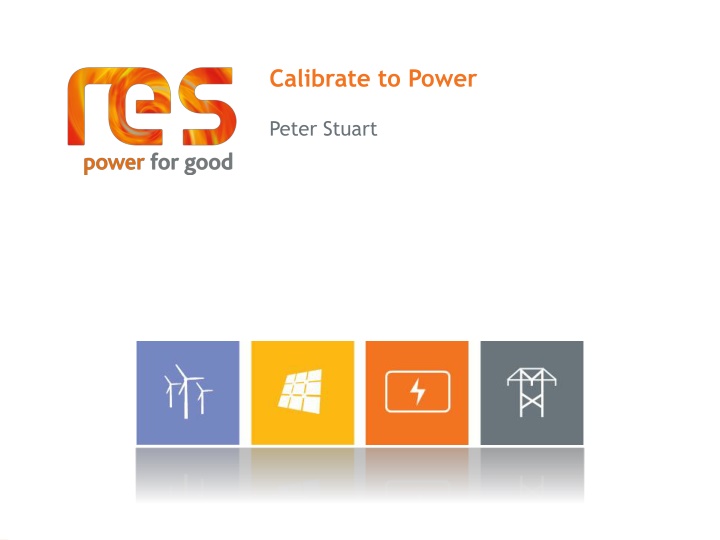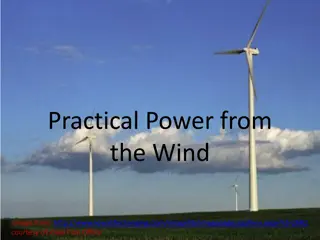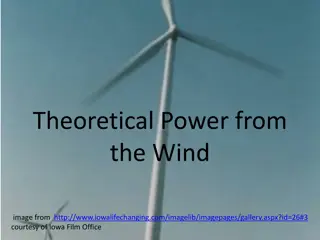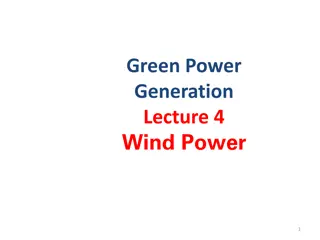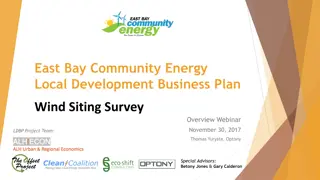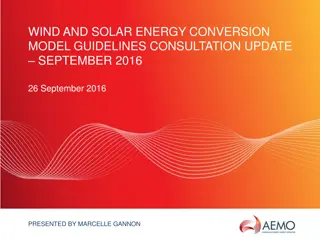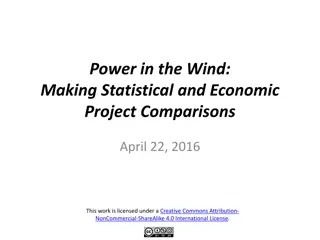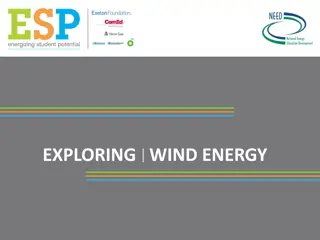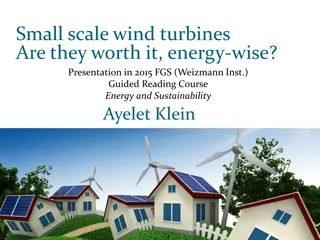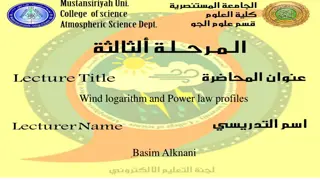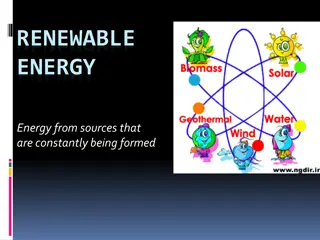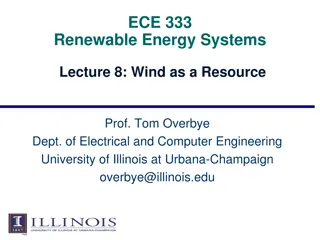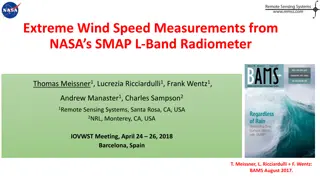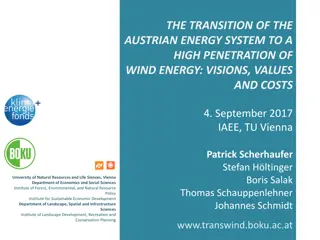Calibrate to Power: Traditional Approach and Machine Learning for Wind Energy Assessment
This document outlines the traditional approach of calibrating wind power using LiDAR technology and specific power curve measurements on various sites. It details steps such as calibrating LiDAR to anemometers, measuring power curves, and moving physical LiDAR devices between sites. Additionally, it introduces the integration of machine learning for statistical modeling in wind energy assessment, aiming to enhance predictive accuracy and address outer range considerations. Various images illustrate these processes, providing a comprehensive overview of the calibration-to-power methodology.
Download Presentation

Please find below an Image/Link to download the presentation.
The content on the website is provided AS IS for your information and personal use only. It may not be sold, licensed, or shared on other websites without obtaining consent from the author.If you encounter any issues during the download, it is possible that the publisher has removed the file from their server.
You are allowed to download the files provided on this website for personal or commercial use, subject to the condition that they are used lawfully. All files are the property of their respective owners.
The content on the website is provided AS IS for your information and personal use only. It may not be sold, licensed, or shared on other websites without obtaining consent from the author.
E N D
Presentation Transcript
Calibrate to Power Peter Stuart
Traditional Approach Traditional Resource Assessment Approach
Traditional Approach: Step 1 Calibrate (validate) LiDAR to Met Mast Anemometer. Anemometer Calibrated in Wind Tunnel LiDAR Serial number ABC123
Traditional Approach: Step 2 Measure Power Curve on test site Power Curve Power Wind Speed (absolute)
Calibrate to Power: LiDAR Specific Power Curve Measurement Measurement on target site (pre-construction) =EY MWh X Absolute Wind Speed Absolute Wind Speed
Calibrate to Power Approach Calibrate to Power Resource Assessment
Calibrate to Power: LiDAR Specific Power Curve Measurement Measurement on Site A (Training): Existing Operational Turbine Model WT100 Site B Site A Power Curve WT100 Power Wind Speed as Measured by ABC123 LiDAR Serial number ABC123
Transport Same Physical LiDAR (Serial ABC123) Move LiDAR (same physical device) to site B. Site B Site A
Calibrate to Power: LiDAR Specific Power Curve Measurement Measurement on Site B (Application): Pre-construction Site for Model WT100 X = planned turbine location Site B Site A WT 100 Power =EY MWh X Wind Speed Measured by ABC123 (on Site A) Wind Speed Measured by ABC123 (on Site B) LiDAR Serial number ABC123 X
Machine Learning This approach would like itself to advance statistical modelling approaches e.g. machine learning. This would mean outer range considerations would be inherently addressed (as long as training data sufficient). Machine Learning Traditional Power Cure WT 100 Power Wind Speed Power Curve Measured by ABC123 (from Site A) A Clifton http://www.nrel.gov/docs/fy13osti/58314.pdf
Training site (e.g. prototype install) Q. How Long does the training measurement need to be? 6 months Measurement at training site Target site (pre-construction) 12 months measurement at target site => Machine Identification 18 months out
Training site (e.g. prototype install) Use of transfer LiDAR to shorten duration 6 week Purple measurement (very low standard error) Blue Existing (purple) at training location Target site (pre-construction) 6 week Green measurement (very low standard error) Move transfer (blue) LiDAR from training to target site Blue Machine Identification 3 months out Existing (green) at target location
Benefits & Next Steps Benefits Site step major measurement uncertainty component (no requirement to reference LiDAR measurement to Anemometer). Provide highly specific training dataset to advanced statistical methods (specific to turbine model and specific to physical LiDAR). Lower overall yield uncertainty, assist project design and inform turbine selection (lower /MWh). Could be extended to loading analysis if loading sensors on training site. Next Steps RES is planning to trial approach on two operational sites in 2018. Training Site (Site A) Validation Site (Site B) RES is open to collaboration with industry stakeholders
Acknowledgements This presentation expands upon ideas originally voiced by Matt Smith of ZephIR.
